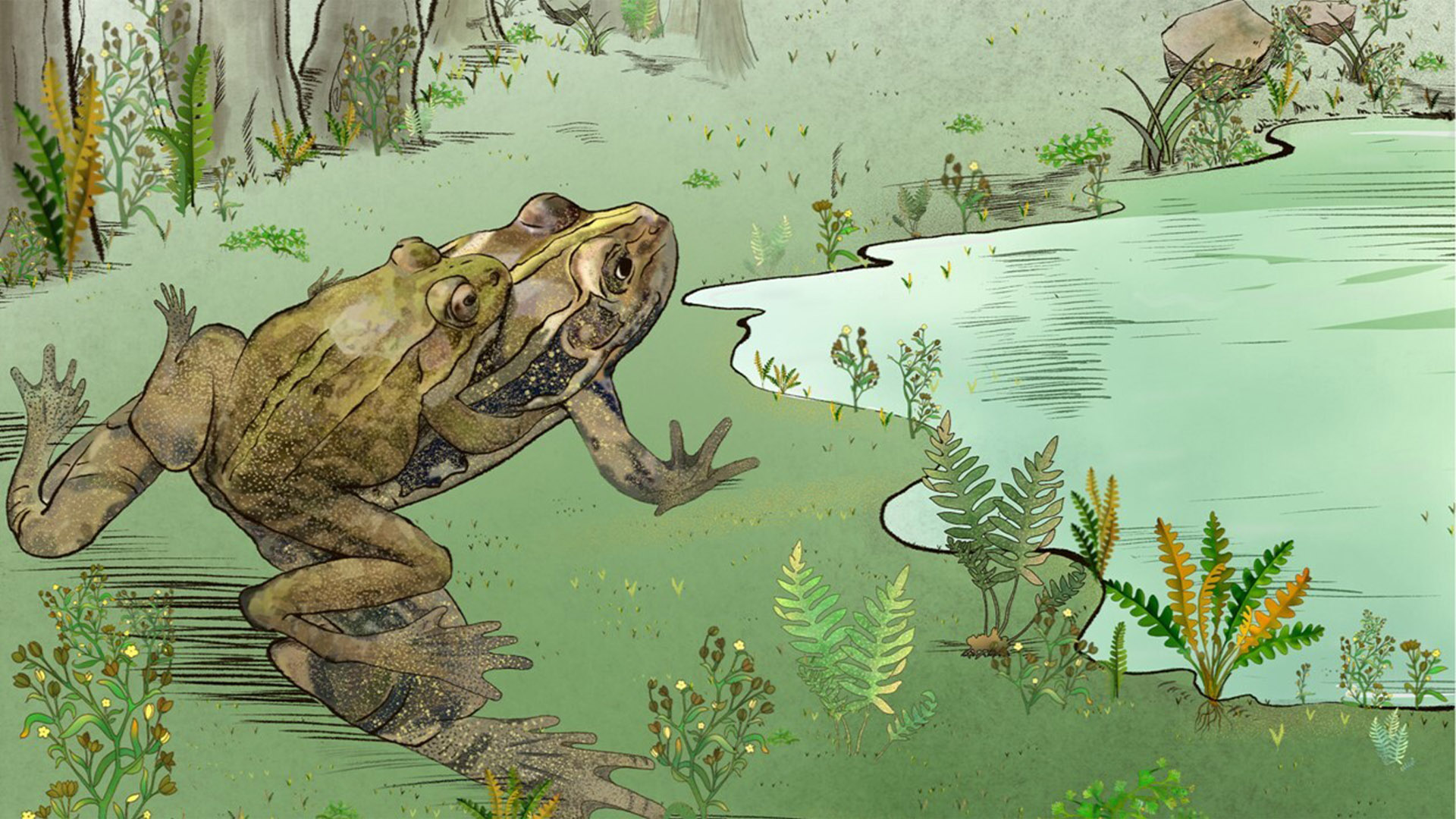Scientists have found the oldest known fossil of a frog living 100 million years ago alongside dinosaurs. The frog was discovered with a belly full of eggs, suggesting that it was likely killed during mating. Researchers believe that the female may have been drowned by a male while the two were mating.
Unlike mammals, frogs do not get pregnant. Female frogs develop a batch of eggs that they are ready to lay when they are in a “gravid” state. The eggs are eventually fertilized by a male. The fossilized frog, from the species Gansubatrachus qilianensis, was found in a fossil bed in northwest China and dates back to the Cretaceous period (145 million to 66 million years ago), according to a study published in the journal Royal Society B: Biological Sciences on Feb. 6.
Fossilized frogs from this period are exceptionally rare, and those that have preserved soft tissues are even rarer. This specimen is particularly extraordinary as it’s the earliest documented record of a gravid frog. The scientists studied the fossilized gravid frog by building a high-resolution model of its skeleton using computed tomography (CT) scans, and analyzing the composition of its eggs using X-rays.
Their analysis revealed that the frog was still not fully developed, which means she was able to reproduce before reaching full physical maturity. Although this is common in many modern animals, there was previously no direct fossil evidence to support this for ancient frogs and toads.
“The evolution of reproduction, especially reproductive strategies, is a very important part of biological evolution,” said lead author Baoxia Du, a paleontologist at Lanzhou University in China.
The researchers ruled out old age or environmental factors as the cause of the frog’s death. Few other frog fossils were found in the deposits, suggesting that some catastrophic event was not the cause. The most likely cause of death is believed to be weakness or suffocation after “amplexus behavior,” which is common among existing frogs. Amplexus refers to the behavior in which males mount and grip onto females with their front legs for extended periods until her eggs are fertilized. This behavior could have led to the female’s death from drowning or exhaustion.
While more fossil records are needed to confirm that early frogs were sexually mature before reaching adulthood, this discovery offers valuable insights into the reproductive history of ancient frogs. “The fact that [early frogs] thrived during the dinosaur era and endured multiple mass extinctions makes studying their survival strategies highly valuable,” Du said. Artist impression of frog life in the Cretaceous. (Image credit: Baoxia Du et al/Royal Society B: Biological Sciences)Understanding the reproductive strategies employed by early frogs could offer valuable insights into their complete reproductive history, he added.
Artist impression of frog life in the Cretaceous. (Image credit: Baoxia Du et al/Royal Society B: Biological Sciences)Understanding the reproductive strategies employed by early frogs could offer valuable insights into their complete reproductive history, he added.














